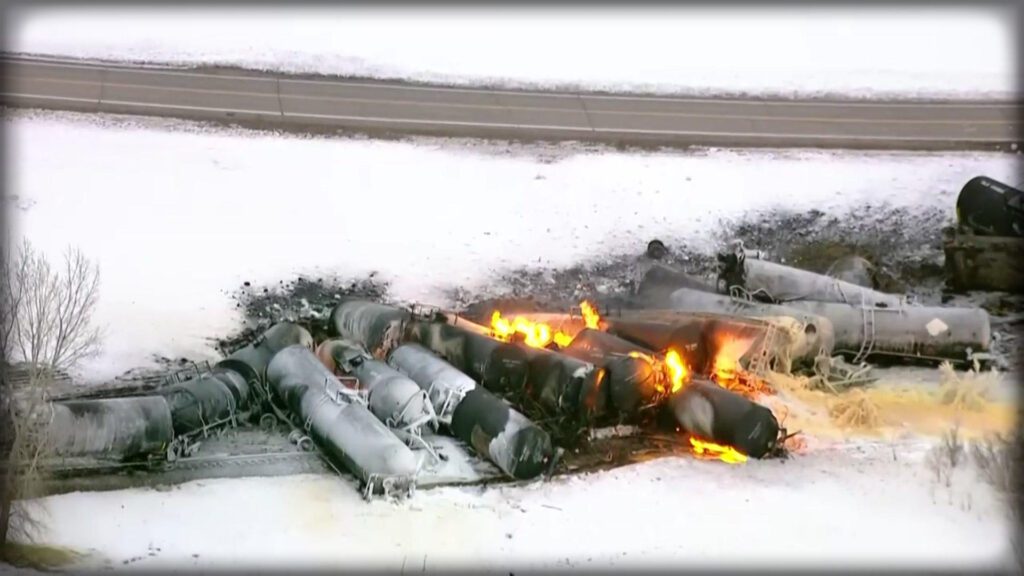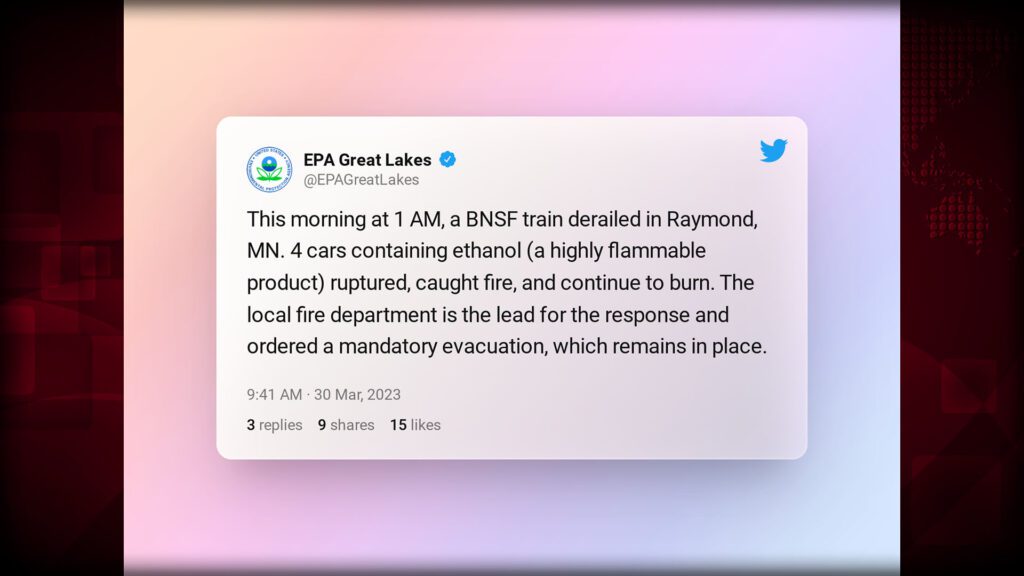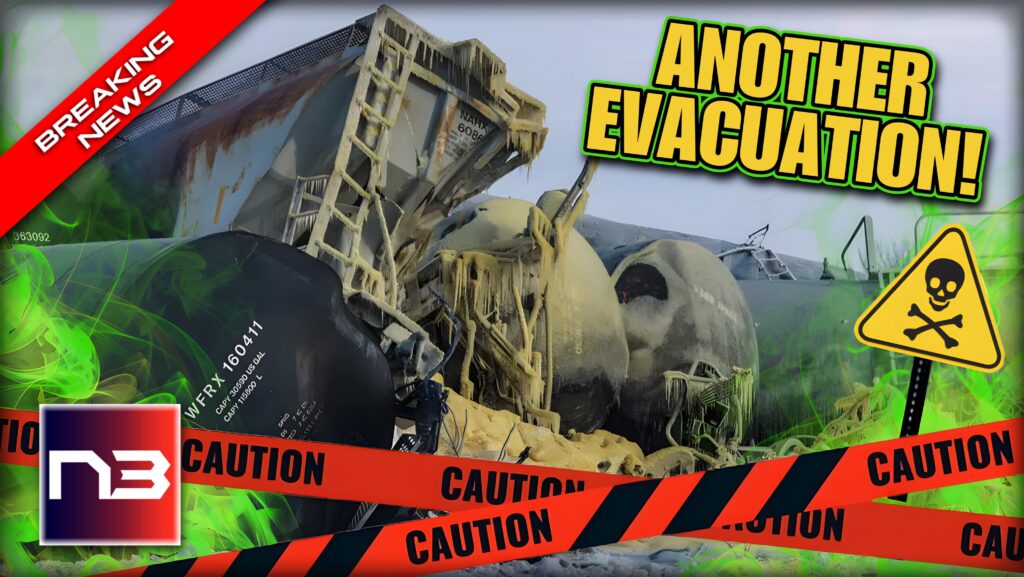Another catastrophic train derailment – this time in Minnesota – has left residents devastated and afraid for their safety. The incident resulted in a massive fire that engulfed multiple rail cars filled with a toxic chemical, prompting the immediate evacuation of nearby homes and businesses.
Around 1 a.m., a BNSF train derailed near Raymond, roughly 100 miles (161 kilometers) west of Minneapolis.


As a result of the derailment, essentially all 250 homes in the town had to be evacuated because they were within 1/2 mile (0.8 kilometers) of the derailment. Around noon, the evacuation order was lifted.
The train was hauling ethanol and corn syrup and caught fire early Thursday, forcing hundreds to evacuate their Minnesota town, but officials hoped the quick response and cold weather would limit the damage.
Officials at BNSF said 22 cars derailed, including 10 ethanol-carrying cars, and the track remained blocked, but no injuries were reported. A fire broke out in four ethanol cars after the flammable fuel additive ruptured, according to EPA officials on Twitter.


Since much of the ethanol will burn off and the ground remains frozen, Minnesota Governor Tim Walz and railroad officials aren’t particularly concerned about groundwater contamination. Furthermore, the EIA reports that pure ethanol is biodegradable and breaks down into harmless substances if spilled.
Even as officials seemed to apply some of the lessons learned after last month’s fiery derailment near East Palestine, Ohio, those pushing for rail safety said the derailment only intensified the debate over reforms Congress and regulators are considering.
Since the Norfolk Southern derailment near the Ohio-Pennsylvania border on Feb. 3, the nation has become increasingly focused on railroad safety. A toxic chemical release and burning in that town of 5,000 left residents worried about the lingering health effects. There have been no harmful levels of toxic chemicals found by the EPA in the air or water, but residents remain uneasy.
In the wake of this devastating train derailment, it is clear that measures must be taken to ensure the safety of our communities and environment. As responders work to extinguish the flames and prevent further damage, the question on everyone’s mind is how this could have happened in the first place. The fact that this incident involved hazardous materials only adds to the severity of the situation, highlighting the need for greater oversight and regulation of transport operations. Moving forward, we must redouble our efforts to ensure that tragedies like this are never allowed to happen again.
Let’s continue this conversation, in the comments below.



